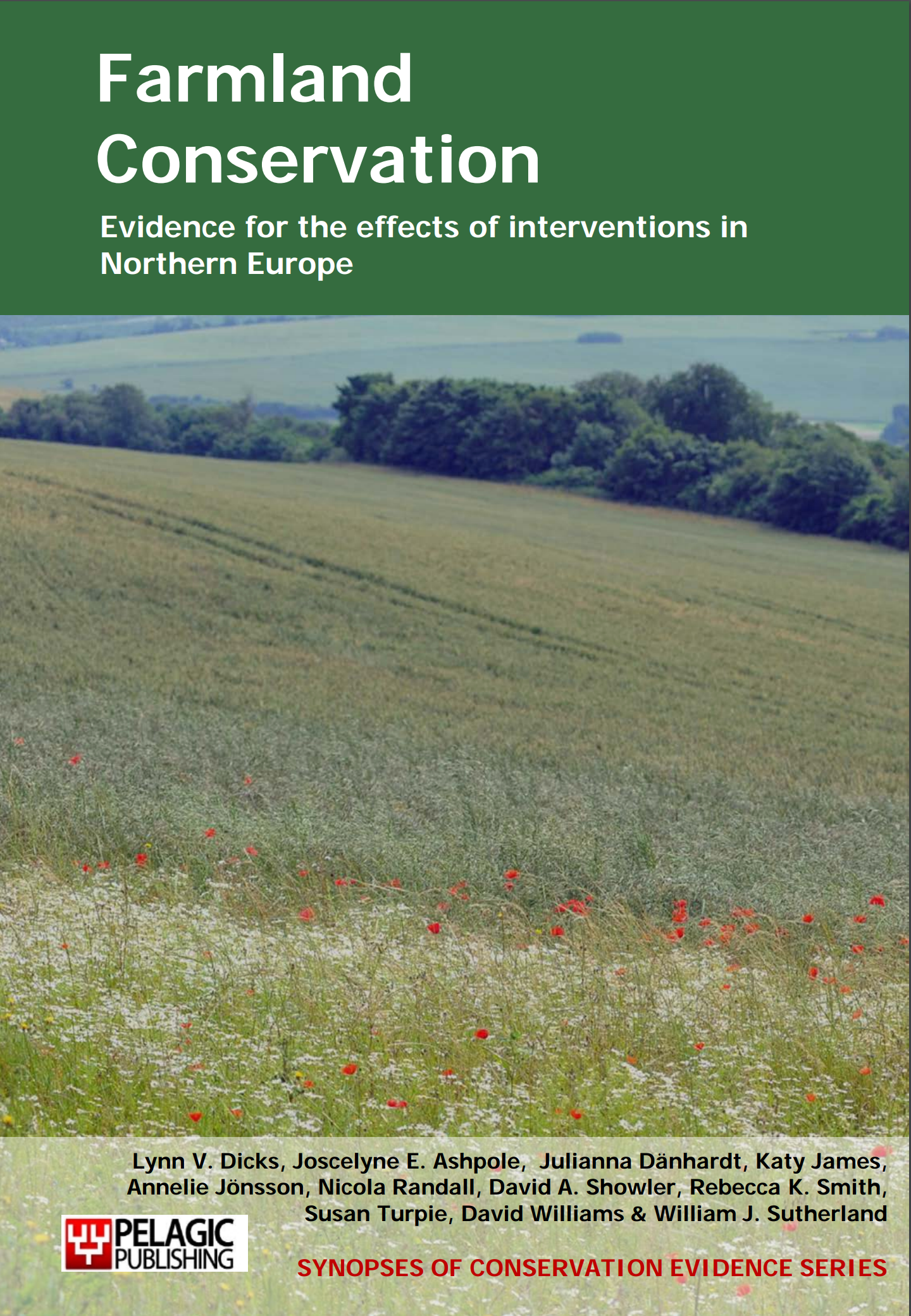Increase the proportion of semi-natural habitat in the farmed landscape
-
Overall effectiveness category Unknown effectiveness (limited evidence)
-
Number of studies: 5
View assessment score
Hide assessment score
How is the evidence assessed?
-
Effectiveness
20% -
Certainty
20% -
Harms
not assessed
Study locations
Supporting evidence from individual studies
A before-and-after study in 6 km2 of mixed farmland in Switzerland (Spiess et al., 2000) found that the populations of corn bunting Miliaria calandra, whitethroat Sylvia communis and common stonechat Saxicola torquata all increased following an increase in the proportion of land under the Ecological Compensation Areas (ECA) Scheme from 0.7% to 8.2% between 1992 and 1996 (corn buntings: six pairs in 1992 vs 26 in 1996; whitethroat: 15 vs 44; stonechat: 14 vs 35). In addition, across 23 study areas in Switzerland, ECA land and a 25 m buffer around it occupied only 17% of farmland but contained more 37-38% of 68 red-backed shrike Lanius collurio territories, 598 yellowhammer Emberiza citrinella territories and 35 whitethroat territories. Only 6% of Eurasian skylarks Alauda arvensis territories were found on ECA land.
Study and other actions testedA review on effects of the Swiss Ecological Compensation Areas (ECA) scheme on biodiversity in arable landscapes in Switzerland (Herzog et al. 2006) found that effects differed between species and taxa. Bird species breeding in hedgerows (dominated by yellowhammer Emberiza citrinella, linnet Carduelis cannabina, red-backed shrike Lanius collurio and common whitethroat Syliva communis) and wetlands (mainly reed warbler Acrocephalus scirpaceus and marsh warbler A. palustris), had more territories than expected near ECAs (hedgerows: 143 territories expected vs 293 observed; wetlands: 31 territories expected vs 52 observed). For species preferring open agricultural habitats (skylark Alauda arvensis, common quail Coturnix coturnix and common kestrel Falco tinnunculus), fewer territories than expected were recorded near ECAs (151 expected vs 68 observed). Many compensation areas were located near vertical structures (such as hedgerows or forest edges), which may bias these results. A correlation between the proportion of ECAs in the landscape and presence of the meadow grasshopper Chorthippus parallelus was found, but there was no such correlation for the bow-winged grasshopper C. biguttulus. The report reviews results from a number of studies. No details on study design, monitoring techniques or other methods were given.
Study and other actions testedA 2007 site comparison study of 23 sites in the lowlands north of the Alps, Switzerland (Birrer et al. 2007) found that the percentage of farmland designated as Ecological Compensation Area (ECA) had no effect on the population density of farmland bird species or bird species with territories incorporating several habitat types. ECAs are areas managed for the primary function of providing plant and animal habitat – these include meadows farmed at a low intensity. For 37 species surveyed in 1998-1999 and again in 2003-2004, population densities in wetlands and rivers were not affected by vicinity to ECAs, although hedges and traditional orchards close to ECAs did have higher bird population densities than those further away. The 23 selected sites (covering up to 3 km² each) were randomly selected and surveyed three times each between April and June in both years of study.
Study and other actions testedA 2007 site comparison study of 516 survey points across the canton of Aargau, Switzerland (Roth et al., 2008) found no consistent effects on biodiversity across taxa. For birds, plants and butterflies, but not for snails, there were more species on Ecological Compensation Area (ECA) than non-ECA sites in the first survey (9.7 vs 7.7 bird species, 19.2 vs 14.6 plant species and 7.3 vs 5.6 butterfly species on ECA and non-ECA sites respectively). There were 4-5 snail species on both ECA and control sites. Changes over time were different on ECA plots than non-ECA plots for plants and snails, but not for birds and butterflies. Between the first survey (1996-2000) and the second survey (2001-2005), numbers of vascular plant and snail species increased on ECAs (by 5.1 and 1.4 species, respectively) but not on non-ECA fields. Across the whole landscape, the number of bird species increased and the number of butterfly species decreased between the two surveys, but the changes were similar on ECA and non-ECA sites. Sampling was based on a regular 2 x 2 m grid system across the entire 1403 km² of the canton of Aargau. Plants, birds, butterflies and snails were surveyed at each grid point. Whether the land or some of the 100 m radius circle plot (for the bird survey) were designated as ECA was recorded. All plots were surveyed twice, five years apart, with the first survey taking place in 1996-2000 and the second in 2001-2005. The authors note that ECAs were typically established on farmland with potential for maximum biodiversity gain, which may have affected the relative numbers of species found in the first survey.
Study and other actions testedA replicated site comparison study of Ecological Compensation Areas (ECAs) created over 97 ha from 1993 in Switzerland (Rudin et al., 2010) found that between 1988 and 2006 the number of bird species remained stable in the entire study area, but increased on ECAs (high-value areas and areas of no special ecological value). Numbers declined on remaining land-use types, only slightly in nature reserves and considerably on cultivated land. More of the 22 breeding bird species recorded were within the nature reserves than ECAs or cultivated land. Population trends were calculated for 12 common species, of which five increased, five decreased and two remained stable. Population increases prevailed in nature reserves and high-value ECAs. Negative population trends were seen on ECAs of no special ecological value and cultivated land. ECAs included wetlands and flower-rich meadows. Breeding bird data were collected in 1988, 1989, 1999 and 2006 in different land use areas.
Study and other actions tested
Where has this evidence come from?
List of journals searched by synopsis
All the journals searched for all synopses
This Action forms part of the Action Synopsis:
Farmland Conservation
Farmland Conservation - Published 2013
Farmland Synopsis





)_2023.JPG)














